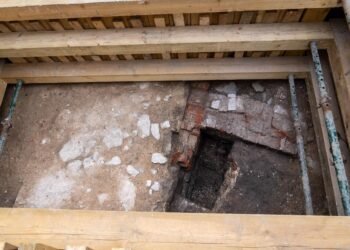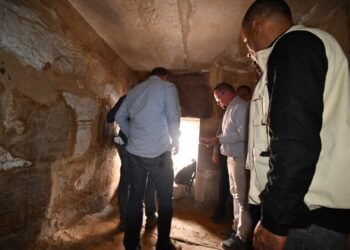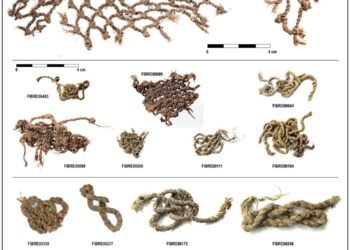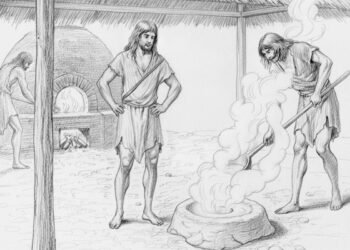Polish archaeologists have uncovered a trove of ancient artifacts, including papyri containing letters from Roman centurions stationed in Egypt, at the site of Berenike on the Red Sea coast.

Led by Dr. Marta Osypińska from the University of Wrocław’s Institute of Archaeology, an international team made this remarkable find while excavating an animal cemetery.
Alongside the papyri, they uncovered an array of artifacts including ceramics from Italy, the Mediterranean, Africa, and India, Roman coins, and a distinctive cloak clasp, possibly indicating the location of a centurion’s office or residence.
The significance of this discovery is immense, particularly in a region where Roman-era sites are scarce. Dr. Osypińska notes that Egypt’s historical narrative often overlooks this period due to its association with foreign conquest. However, the breadth of findings at Berenike offers unparalleled insights into the daily lives of its ancient inhabitants.

Berenike itself, established by Emperor Tiberius shortly after the Roman Empire annexed Egypt, served as a crucial port city. It is believed that the Third Cyrenaica Legion, known for its role in events like pacifying the Jerusalem uprising in 70 CE, may have been stationed there. The recent discoveries, including Roman coins, provide tangible evidence of the Roman presence in Berenike.
The uncovered papyri contain correspondence between centurions or Roman legion commanders. Names like Haosus, Lucinius, and Petronius appear in these letters, which detail mundane matters such as the prices of goods and logistical arrangements for the legionaries. One such letter from Petronius to Lucinius illustrates the practical concerns of provisioning troops: “I give you the money, I send them with dromedarius. Take care of them, so that they are provided with calves and tent poles.”
The archaeological team made the discovery in an area believed to be the office or residence of a centurion, adjacent to the animal cemetery. Over time, as the landscape shifted, remnants of the legionnaires’ presence became intermingled with the animal burials, preserving these invaluable artifacts.
Initially, the significance of the papyri was underestimated, as they were found in small, seemingly inconsequential rolls. However, with the expertise of Professor Rodney Asta from the University of Heidelberg, who painstakingly pieced together the fragments, the letters have begun to reveal their secrets.
The presence of these documents alongside animal burials suggests a close connection between the centurion’s quarters and the cemetery, possibly indicating ritualistic or practical interactions between the military and local communities.
The excavation, part of the project ‘Non-humans in the Berenike community,’ funded by the National Science Centre, represents a significant contribution to our understanding of ancient Egyptian society and its interactions with the Roman Empire.






















